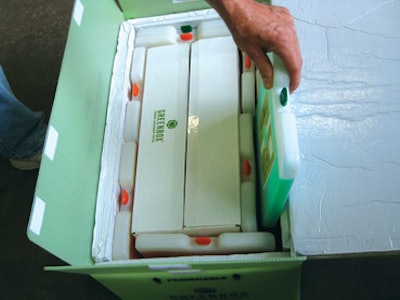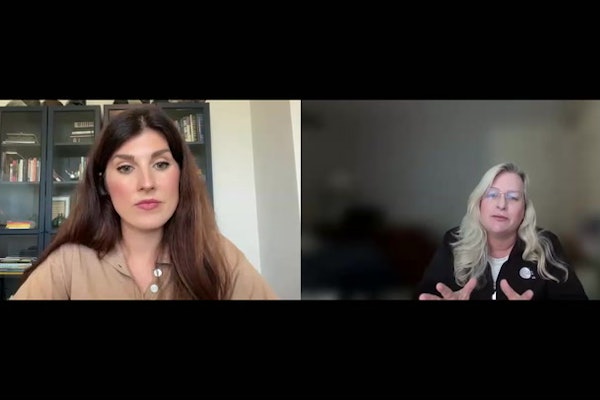
The system comprises three parts. The first is a reusable, durable, outer high-density polyethylene shipping case, which resembles a white corrugated mail container. For insulation, the Greenbox employs recycled carbon silica that uses a nanotechnology-based manufacturing process designed to yield an "R" value of 40, considerably more than traditional materials within a corrugated shipping case. The third element of the Greenbox system is a vegetable-based phase-change material that simultaneously absorbs and releases heat to provide a thermostat effect until the package reaches its destination.
"We use the Greenbox in both 9-inch and 12-inch cube versions for refrigerated, controlled room-temperature shipments to Alaska and Hawaii," says Soucey. "We have begun to use each size in a variety of states for room-temperature shipments. We continue to use EPS [expanded polystyrene]/corrugated overpack units for the bulk of our shipments."
He explains, "Julian Carroll, managing director for the European Organization for Packaging and the Environment, noted during last September's Sustainable Packaging Forum in Pittsburgh, that one of the weaknesses in the Wal-Mart sustainability initiative was that its focus was confined to packaging that remained in Wal-Mart's custody and excluded packaging that remained with the consumer. We feel that the Greenbox provides a practical solution to bridging this gap." How?
"Irrespective of the model of use, whether it's 'rented' on a per-use [basis] or purchased and returned to a reclamation center, no transit packaging is left with the consumer to dispose of," Soucey says.
From an economic perspective, he admits, Greenbox is-under either model of use-more expensive than "traditional" packaging. "However, it does allow us to save relative to shipping charges by shifting from Priority Overnight, or standard Overnight rates to second- and third-day rates, he adds. "And, in the case of controlled room-temperature shipments, [it yields savings compared with] ground-transport rates.
"The major benefit of their phase-change materials, beyond excellent performance, is that they are vegetable oil-based, not propylene glycol-based. That removes a potential hazard from the packaging relative to spills, leakage, and environmental contamination. The Greenbox construction, to date, performs as advertised. It is robust."
He says that in the next year, "Wal-Mart will continue to expand its use of Greenbox in a number of controlled trials to test "drop-out rates" and "turns." By turns, Soucey refers to the number of times the Greenbox is returned and successfully reconditioned for reuse. Less than 25 turns would be unsuitable. Drop-out rates refer to the proportion of Greenboxes that are rendered unsuitable for reuse or kept by the receiver for one reason or another. He says, "A drop-out rate of greater than five percent would be unsuitable. By and large, EPS/corrugated combinations are a one-time-only use proposition."
"I applaud Wal-Mart on a couple of fronts," says Steve Skallerud, Entropy Solutions' vp of sales and marketing. "First, James Soucey has been very proactive in seeking a better way to get prescriptions to WMSP customers. And, the Wal-Mart green initiative has led industries with its internal environmental scorecards as it holds people and their vendors accountable."
Biopharmaceutical shipping challenges
"The whole area of biopharmaceuticals and biological products creates an enormous challenge for end-user companies in that the products are so fragile and sensitive," says Steve Skallerud, Entropy Solutions' vp of sales and marketing. "One of the big challenges for those manufacturers is that the industry has always had two temperature ranges available to them: frozen and the two-degree to eight-degree celsius range. So, if a company was developing anything outside that range, the only way to transport it was in a refrigerator that needed people to accompany the shipment."
Another area of growth, says Skallerud, is in home treatment. "The baby-boom population is getting older. Insurance companies are pressuring people to get out of hospitals." With those factors, he says, "the area of home infusion is really [growing]. People are leaving hospitals and they may still be on IV treatments or using injectable drugs, so now those drugs need to go directly to consumers' homes. Pharmaceutical distributors and other companies are even beginning to specialize in this area."





















